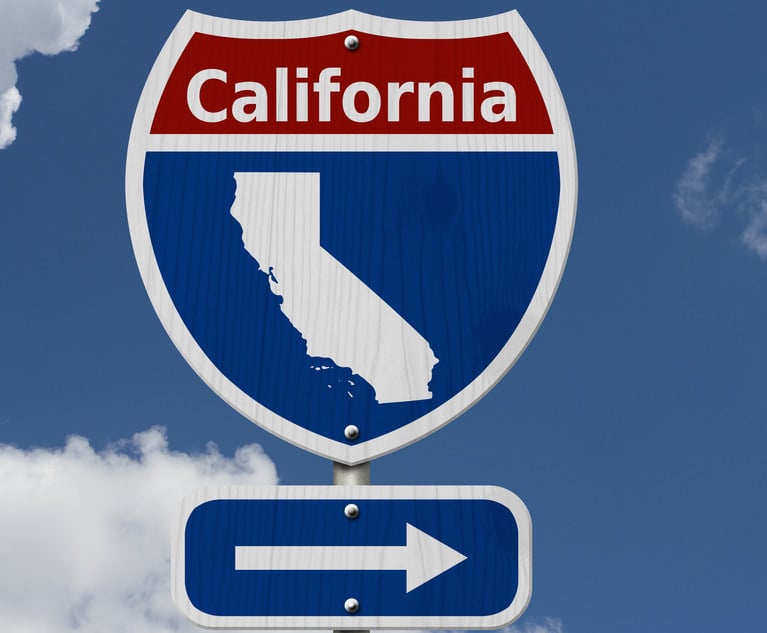 Usage-based insurance sales areanticipated to take off in 2017, with expectations that UBIprograms will achieve a compound annual growth rate of more than60% between 2017 and 2020. (Photo: iStock)
Usage-based insurance sales areanticipated to take off in 2017, with expectations that UBIprograms will achieve a compound annual growth rate of more than60% between 2017 and 2020. (Photo: iStock)
Usage-based insurance (UBI) is gaining traction in property andcasualty as insurers find they can attract drivers — especiallyyounger ones — with telematics-based plans that offer savings inreturn for consent to monitor driver performance.
|But while UBI and telematics are generating buzz within theindustry, they're not new concepts. A look back at the history oftelematics tells a fascinating tale.
|The story begins in the early 1960s, at a time when tensionsbetween the United States and the former Soviet Union were at theirhighest. The U.S. government, intent on national security andworried about a nuclear threat, funded the development of globalpositioning system technology. Initially, GPS was intended formilitary and intelligence applications. But a decade later, theconcept of GPS for civilian applications became a reality. Whenthat happened, the seed was planted for the idea we know today astelematics.
|"Telematics" as a phrase was coined in an obscure technologydevelopment report in 1978. In the decade that followed, majorresearch programs were created to experiment with vehicletelematics, with the objective of improving road safety andreducing environmental impact. By 1993, GPS technology had reachedthe consumer market. That's when the U.S. government offered fullGPS access to civilians. By the early 2000s, telematicstechnologies were used enterprisewide in web-based fleet managementsystems that featured real-time information updates to remotenetworks. At that time, slow tracking rates limited datatransmissions to one or two instances per hour. Soon, the consumermarket became flooded with GPS-based vehicle navigationsystems.
|Unprecedented innovations
The next evolution saw advancements in cloud andmachine-to-machine (M2M) technologies, enabling superfast andprecise tracking of GPS data and making other sensor parametersaccessible for real-time reporting. Today, the enterprise andconsumer markets are benefiting from unprecedented innovations across theInternet of Things (IoT) and from expanded M2M-basedtelematics data management capabilities.
|Present-day telematics technology is synonymous with fleetmanagement systems and represents the heart of M2M- and IoT-basedbusiness model innovation. UPS, the package delivery service, maybe the king of M2M, having adopted those technologies early on torevolutionize its fleet, a practice other enterprises have sincefollowed. IoT sensors installed in UPS vehicles produce 1.25billion telematics records per week and include a combination ofcustomer delivery information, driver behavioral data, and otherGPS-based fleet management information. Results include savings ofnearly a million gallons of fuel annually, faster and more accuratedelivery, enhanced resource use, and increased revenue streams.
|The consumer market itself is experiencing a similar boom, withglobal integrated telematics expected to be included in more than90% of new cars in the next decade, according to a 2015 BusinessInsider report. Employing commercially viable telematics strategiesmay be key to business success in today's ever-connected era.
|Telematics is changing the structure of the insuranceindustry
Advancements in M2M, GPS, and sensor technologies are alteringthe face of competition, with big data from telematics being one ofthe most valued assets for business organizations. The technologyis essentially changing the structure of industry, creating newways for companies to outperform their competition and evenspawning an entire line of business from many existing operations.Yet the strategic significance of telematics goes beyond systemsinvestments to encompass wider practices of reshaping businessoperations, products, and entire value chains.
|The UBI concept has advanced significantly since itsintroduction. In its infancy, UBI was promoted as a tracking systemand featured in premium cars. Today, many UBI systems exist,including embedded "black box" tracking systems, OBD II–basedtelematics, and tethered smartphone-based solutions.
|Where early UBI programs calculated premiums based on a driver'smileage, today's UBI models offer greater diversity. For example,pay as you drive (PAYD) programs, a form of UBI growing inpopularity, uses technology that examines how a driver performs andsets premiums based on those findings. The first commercial launchof PAYD insurance occurred in 2007, and we're now seeing heavieradoption within the industry in both North America and Europe.
|In 2010, companies such as Qualcomm introduced a PAYD system,and Renault introduced a similar system for fleets. Since then,PAYD trials have been increasing and in some cases even doubling,with 75% of UBI launches now based on this solution. The currentdomination of PAYD is now giving way to PHYD (pay how you drive),with PHYD metrics quickly becoming the preferred source forcalculating premiums.
|Customer acceptance
UBI sales are anticipated to take off in 2017, with expectationsthat UBI programs will achieve a compound annual growth rate ofmore than 60% between 2017 and 2020. A major contributor to thegrowth in UBI sales will likely be increased customer acceptance,especially as it translates to customers' willingness to sharedata. In addition, the cost of acquiring data and hardware areprojected to decline, and that should contribute positively to UBIsales as well.
|It should be noted that legislative changes and support fromstate regulators could help advance the growth of UBI programs inthe market. Equally, if not more important, will be potentialimprovements in consumer driving behavior. Those factors must beviewed as central for the UBI market to realize its full growthpotential.
|For more information about the history of GPS and its role inthe evolution of telematics, go to Julian's Science Experiments.
|Dave Fiore is senior product manager in charge of the VeriskTelematics Data Exchange at Jersey City, N.J.-based Verisk Analytics.
|Related: The Internet of Things: A telematics goldrush!
|Are you following us on Facebook?
Want to continue reading?
Become a Free PropertyCasualty360 Digital Reader
Your access to unlimited PropertyCasualty360 content isn’t changing.
Once you are an ALM digital member, you’ll receive:
- All PropertyCasualty360.com news coverage, best practices, and in-depth analysis.
- Educational webcasts, resources from industry leaders, and informative newsletters.
- Other award-winning websites including BenefitsPRO.com and ThinkAdvisor.com.
Already have an account? Sign In
© 2024 ALM Global, LLC, All Rights Reserved. Request academic re-use from www.copyright.com. All other uses, submit a request to [email protected]. For more information visit Asset & Logo Licensing.








